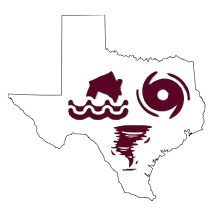Emergency Supplies for the Home
The general rule when preparing for a hazard event is to be self-sustaining for a minimum of 72 hours.
Depending on the severity and impact of the event, basic supplies may be unavailable or inaccessible for several days thereafter. If you are sheltering in place or returning home while utilities are still disrupted, one to two weeks’ worth of supplies is advised. If the space is available and the house is well-protected, stocking up is worthwhile. Items should be checked monthly to ensure they are fresh; do not keep expired supplies.
Emergency supplies should be assembled as soon as possible; do not wait until an emergency to gather supplies.

Examples of Emergency Supplies. Source: retrieved April 24, 2018, from the California Department of Public Health
Emergency supplies should include at least the following:
Food
- Non-perishable food – dry or canned goods, snacks
- Manual can opener
- Paper plates, plastic utensils, cups, etc.
- Baby food, formula, and bottles, if needed
Water
- Supply: 1-2 gallons per person per day for drinking, cooking, and hygiene. Remember that children, nursing mothers, the elderly, and sick individuals require more water.
- Storage: Large, reusable containers should be well-rinsed and filled prior to the storm. Empty 14- or 15-gallon barrels can also be purchased online.
First Aid and Sanitation Items
- General first aid kit – bandages, aspirin, coldpacks, etc.
- Special medications and a list of prescriptions
- List of physicians providing care for specific or chronic health conditions
- Personal hygiene items, toilet paper, feminine products, and diapers, as needed
- Disinfectant, hand sanitizer
- Sunscreen, bug repellant
Other Items
- Cell phone and charger
- List of emergency telephone numbers, in case cellphones are not working
- Extra cash, since ATMs may not be working
- Flashlight and extra batteries
- Portable radio or a NOAA all-hazard weather radio, with extra batteries
- Matches and a lighter
- Copies or electronic back-up of important documents, including driver’s license, social security card, proof of residence, insurance policies, deeds, birth and marriage certificates, and medical records
- Bedding and clothing (including rain gear) for each person
- Paper and pencils
- Games and books for children
- Pet supplies and documentation (vaccines, microchip number, etc.)
- Waterproof plastic sheeting or tarp, adhesive tape, and rope
- Alternate power supplies: inverters, power stations, generators (with gas tanks if needed)
